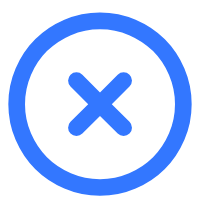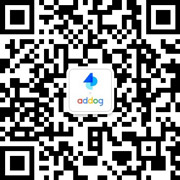本案例默认翻译为中文,点击可切换回原语言
已切换成原语言,点击可翻译成中文
搜索
案例简介:结果 尼尔森研究对 “任何尺寸 1 美元” 软饮料的试验是之前所有活动中最高的 (来源: 尼尔森) 这项活动推动了搜索意图 18,400% 的增长 (来源: 谷歌趋势) 赢得媒体每月有 411,166 次 83 次独特访问 (来源: Muckrack)有 61 篇关于该活动的文章发表 (来源: Muckrack) 我们在推特、 Instagram 上吸引了 2,055 次有机社交活动 youTube 和 Facebook (不包括麦当劳、柯以敏 Kaling 帖)。(资料来源: Sprinklr) • 我们支付社会观感是超过 275.8 米 (图片来源: 谷歌,Facebook,Twitter,Instagram) • YouTube 首页印象: 274 米 (图片来源: YouTube) 所有 “搜索” 活动内容的总视图 -- “像素化” 、 “那个地方” 、 “秘密身份” 、 “饮料技术人员” 、 “搜索” 、 “取消”: 4.2 米 (图片来源: YouTube) 概要 麦当劳一直被认为是美国标志性的汉堡品牌 -- 美国最大的汉堡快餐连锁店。然而,很少考虑麦当劳饮料目的地。今年春天,该公司试图改变这一点。4月,麦当劳发起了第一个全国性的 “任何规模 1 美元” 软饮料运动,将客人带回餐馆。尽管便利店 (7-11 、高速公路、 K 圈、 QuikTrip) 和快速服务餐馆 (索尼克、汉堡王、温迪, chick-fil-A,Carl's jr.) 一直以有竞争力的价格进行全国饮料促销 (通常不到 1 美元)。虽然这是一个价值提升,28% 目前客户购买他们的饮料的其他地方,因为他们觉得他们可以得到更好的处理 (资料来源: 可口可乐公司--记缺陷研究,2014年8月)。由于缺乏忠诚度,饮料促销空间也不公平,我们需要以不同的方式解决这个问题。 执行 2017年4月11日,我们通过 YouTube 移动刊头位置发起了 “搜索” 活动,将消费者直接带到搜索结果页面,寻找 “可乐味道如此好的地方”。那天晚上晚些时候,在黄金时段的电视观看时间,我们开始播下第一个电视广告。在第一周,我们在广播、在线视频和一个独特的 YouTube 频道上发布了几个额外的电视节目。我们使用的第一周的活动,引导人们的谈话已经实现了网上各地麦当劳可乐。在接下来的两周里,一旦每个人都在开玩笑, 我们有幸继续通过引用我们自己的活动来推动我们的 1 美元可口可乐信息,并继续成为热门话题的一部分。在为期三周的活动期间,我们还推出了一系列横幅广告、广播、印刷和社交广告来配合视频工作。 活动描述 利用数据和社交倾听,我们发现围绕我们快餐连锁店的可乐有一个更有趣的对话。事实上,如果你搜索 “地方可乐味道很好,” 页页说明为什么可乐的味道很好的快餐连锁店。这已经是流行文化中的一次对话 -- 我们所要做的就是照亮它。我们认为做到这一点的最好方法是通过一场第一次没有品牌的综合活动将品牌完全从对话中剔除。通过不提这个品牌,我们可以利用第二屏幕的好奇心,驱使消费者搜索 “可乐味道如此好的地方”。 “没有什么比一个第三方背书并没有大的支持比谷歌原生搜索。 战略 我们需要一些东西来区分我们在拥挤的市场上的促销,因为我们不能仅仅靠价格取胜。对于麦当劳可乐来说,这就是味道 -- 不可否认,麦当劳供应最好的可乐。事实上,工艺背后有一门科学 -- 从水过滤过程到标志性的定制吸管。但是消费者知道甚至关心吗?社交倾听揭示了麦当劳可乐疯狂的文化粉丝。几乎所有关于麦当劳饮料的谈话中有三分之一是关于我们的可乐。为了确保这种感觉不仅仅是一个社会生活,我们派出了一个国家研究的 2,000 个美国成年人,问他们,“所有的地方供应饮水机可乐,谁了最好的?“我们发现麦当劳以 4 比 1 击败了所有快餐竞争对手。然后我们查看了围绕麦当劳可乐的有机搜索查询,发现人们对麦当劳可乐有着永不满足的好奇心为什么
搜索
案例简介:Outcome •Nielsen Study Trial for “$1 any size” soft drinks was the highest of all previous campaigns (Source: Nielsen) •In the first two weeks, the campaign drove an 18,400% increase in search intent (Source: Google Trends)•There were 411,166,83 unique visits per month in earned media (Source: Muckrack) •There were 61 articles published about the campaign (Source: Muckrack) •We attracted 2,055 organic social campaign mentions on Twitter, Instagram, YouTube and Facebook (does not include McDonald's or Mindy Kaling posts). (Source: Sprinklr)•Our total paid social impressions were over 275.8M (Source: Google, Facebook, Twitter, Instagram)•YouTube masthead impressions: 274M (Source: YouTube) •Total views for all “Search” campaign content – “Pixelated,” “That Place,” “Secret Identity,” “Beverage Technician,” “Search,” “Cancelled”: 4.2M (Source: YouTube) Synopsis McDonald’s has always been regarded as an iconic American hamburger brand – the largest hamburger fast food chain in the US. Yet very few consider McDonald’s a beverage destination. This spring, the company sought to change that. In April, McDonald’s ran its first national “$1 any size” soft drink campaign to bring guests back into restaurants. Sales forecasts were ambitious, despite strong competition from convenience stores (7-Eleven, Speedway, Circle K, QuikTrip) and quick service restaurants (Sonic, Burger King, Wendy’s, Chick-fil-A, Carl’s Jr.) that have consistently run national beverage promotions at competitive price points (often for less than $1). And while this was a value promotion, 28% of current customers were purchasing their drinks elsewhere because they felt they could get a better deal (Source: TCCC – Mind Gap Study, August 2014). With lack of loyalty and no equity in the beverage promotional space, we needed to tackle this issue differently. Execution On April 11, 2017, we launched the “Search” campaign through a YouTube mobile masthead placement that drove consumers directly to the search results page for “that place where Coke tastes SO good.” Later that evening, during primetime television viewing hours, we began to seed the first television commercial. Throughout that first week, we released several additional television spots on broadcast, online video and a unique YouTube channel. We used the first week of the campaign to introduce people to the conversation already happening online around Coke at McDonald’s. And in the two weeks that followed, once everyone was in on the joke, we had the luxury of continuing to push our $1 Coke message by referencing our own campaign and continuing to be part of topical conversations. Throughout the three-week campaign period we also launched a series of banner ads, radio, print and social to accompany the video work. CampaignDescription Using data and social listening, we discovered that there was a much more interesting conversation around our fast food chain’s Coke. In fact, if you Google “that place where Coke tastes SO good,” page after page explains why the Coke tastes so good at our fast food chain. It was already a conversation in pop culture – all we had to do was shine a light on it. We thought the best way to do this was to take the brand entirely out of the conversation with a first-of-its-kind unbranded integrated campaign. By never mentioning the brand, we could tap into second-screen curiosity, driving consumers to perform a search for “that place where Coke tastes SO good.” There’s nothing better than a third-party endorsement and there’s no bigger third-party endorsement than a Google organic search. Strategy We needed something that could differentiate our promotion in a crowded market as we could not win on price alone. For McDonald’s Coke, that was the taste – McDonald’s undeniably serves the best Coke. In fact, there’s a science behind the craft – from the water filtration process to the iconic custom straw. But did consumers know or even care? Social listening revealed an insane level of cultural fandom for McDonald’s Coke. Nearly a third of all conversations about McDonald’s beverages were about our Coke alone. To ensure this sentiment wasn’t just a social niche, we fielded a national study of 2,000 US adults, asking them, “Of all the places that serve fountain Coke, who has the best?” We found that McDonald’s beat out every fast food competitor 4 to 1. We then looked at organic search queries surrounding McDonald’s Coke, to discover there was an insatiable curiosity about why
Search
案例简介:结果 尼尔森研究对 “任何尺寸 1 美元” 软饮料的试验是之前所有活动中最高的 (来源: 尼尔森) 这项活动推动了搜索意图 18,400% 的增长 (来源: 谷歌趋势) 赢得媒体每月有 411,166 次 83 次独特访问 (来源: Muckrack)有 61 篇关于该活动的文章发表 (来源: Muckrack) 我们在推特、 Instagram 上吸引了 2,055 次有机社交活动 youTube 和 Facebook (不包括麦当劳、柯以敏 Kaling 帖)。(资料来源: Sprinklr) • 我们支付社会观感是超过 275.8 米 (图片来源: 谷歌,Facebook,Twitter,Instagram) • YouTube 首页印象: 274 米 (图片来源: YouTube) 所有 “搜索” 活动内容的总视图 -- “像素化” 、 “那个地方” 、 “秘密身份” 、 “饮料技术人员” 、 “搜索” 、 “取消”: 4.2 米 (图片来源: YouTube) 概要 麦当劳一直被认为是美国标志性的汉堡品牌 -- 美国最大的汉堡快餐连锁店。然而,很少考虑麦当劳饮料目的地。今年春天,该公司试图改变这一点。4月,麦当劳发起了第一个全国性的 “任何规模 1 美元” 软饮料运动,将客人带回餐馆。尽管便利店 (7-11 、高速公路、 K 圈、 QuikTrip) 和快速服务餐馆 (索尼克、汉堡王、温迪, chick-fil-A,Carl's jr.) 一直以有竞争力的价格进行全国饮料促销 (通常不到 1 美元)。虽然这是一个价值提升,28% 目前客户购买他们的饮料的其他地方,因为他们觉得他们可以得到更好的处理 (资料来源: 可口可乐公司--记缺陷研究,2014年8月)。由于缺乏忠诚度,饮料促销空间也不公平,我们需要以不同的方式解决这个问题。 执行 2017年4月11日,我们通过 YouTube 移动刊头位置发起了 “搜索” 活动,将消费者直接带到搜索结果页面,寻找 “可乐味道如此好的地方”。那天晚上晚些时候,在黄金时段的电视观看时间,我们开始播下第一个电视广告。在第一周,我们在广播、在线视频和一个独特的 YouTube 频道上发布了几个额外的电视节目。我们使用的第一周的活动,引导人们的谈话已经实现了网上各地麦当劳可乐。在接下来的两周里,一旦每个人都在开玩笑, 我们有幸继续通过引用我们自己的活动来推动我们的 1 美元可口可乐信息,并继续成为热门话题的一部分。在为期三周的活动期间,我们还推出了一系列横幅广告、广播、印刷和社交广告来配合视频工作。 活动描述 利用数据和社交倾听,我们发现围绕我们快餐连锁店的可乐有一个更有趣的对话。事实上,如果你搜索 “地方可乐味道很好,” 页页说明为什么可乐的味道很好的快餐连锁店。这已经是流行文化中的一次对话 -- 我们所要做的就是照亮它。我们认为做到这一点的最好方法是通过一场第一次没有品牌的综合活动将品牌完全从对话中剔除。通过不提这个品牌,我们可以利用第二屏幕的好奇心,驱使消费者搜索 “可乐味道如此好的地方”。 “没有什么比一个第三方背书并没有大的支持比谷歌原生搜索。 战略 我们需要一些东西来区分我们在拥挤的市场上的促销,因为我们不能仅仅靠价格取胜。对于麦当劳可乐来说,这就是味道 -- 不可否认,麦当劳供应最好的可乐。事实上,工艺背后有一门科学 -- 从水过滤过程到标志性的定制吸管。但是消费者知道甚至关心吗?社交倾听揭示了麦当劳可乐疯狂的文化粉丝。几乎所有关于麦当劳饮料的谈话中有三分之一是关于我们的可乐。为了确保这种感觉不仅仅是一个社会生活,我们派出了一个国家研究的 2,000 个美国成年人,问他们,“所有的地方供应饮水机可乐,谁了最好的?“我们发现麦当劳以 4 比 1 击败了所有快餐竞争对手。然后我们查看了围绕麦当劳可乐的有机搜索查询,发现人们对麦当劳可乐有着永不满足的好奇心为什么
Search
案例简介:Outcome •Nielsen Study Trial for “$1 any size” soft drinks was the highest of all previous campaigns (Source: Nielsen) •In the first two weeks, the campaign drove an 18,400% increase in search intent (Source: Google Trends)•There were 411,166,83 unique visits per month in earned media (Source: Muckrack) •There were 61 articles published about the campaign (Source: Muckrack) •We attracted 2,055 organic social campaign mentions on Twitter, Instagram, YouTube and Facebook (does not include McDonald's or Mindy Kaling posts). (Source: Sprinklr)•Our total paid social impressions were over 275.8M (Source: Google, Facebook, Twitter, Instagram)•YouTube masthead impressions: 274M (Source: YouTube) •Total views for all “Search” campaign content – “Pixelated,” “That Place,” “Secret Identity,” “Beverage Technician,” “Search,” “Cancelled”: 4.2M (Source: YouTube) Synopsis McDonald’s has always been regarded as an iconic American hamburger brand – the largest hamburger fast food chain in the US. Yet very few consider McDonald’s a beverage destination. This spring, the company sought to change that. In April, McDonald’s ran its first national “$1 any size” soft drink campaign to bring guests back into restaurants. Sales forecasts were ambitious, despite strong competition from convenience stores (7-Eleven, Speedway, Circle K, QuikTrip) and quick service restaurants (Sonic, Burger King, Wendy’s, Chick-fil-A, Carl’s Jr.) that have consistently run national beverage promotions at competitive price points (often for less than $1). And while this was a value promotion, 28% of current customers were purchasing their drinks elsewhere because they felt they could get a better deal (Source: TCCC – Mind Gap Study, August 2014). With lack of loyalty and no equity in the beverage promotional space, we needed to tackle this issue differently. Execution On April 11, 2017, we launched the “Search” campaign through a YouTube mobile masthead placement that drove consumers directly to the search results page for “that place where Coke tastes SO good.” Later that evening, during primetime television viewing hours, we began to seed the first television commercial. Throughout that first week, we released several additional television spots on broadcast, online video and a unique YouTube channel. We used the first week of the campaign to introduce people to the conversation already happening online around Coke at McDonald’s. And in the two weeks that followed, once everyone was in on the joke, we had the luxury of continuing to push our $1 Coke message by referencing our own campaign and continuing to be part of topical conversations. Throughout the three-week campaign period we also launched a series of banner ads, radio, print and social to accompany the video work. CampaignDescription Using data and social listening, we discovered that there was a much more interesting conversation around our fast food chain’s Coke. In fact, if you Google “that place where Coke tastes SO good,” page after page explains why the Coke tastes so good at our fast food chain. It was already a conversation in pop culture – all we had to do was shine a light on it. We thought the best way to do this was to take the brand entirely out of the conversation with a first-of-its-kind unbranded integrated campaign. By never mentioning the brand, we could tap into second-screen curiosity, driving consumers to perform a search for “that place where Coke tastes SO good.” There’s nothing better than a third-party endorsement and there’s no bigger third-party endorsement than a Google organic search. Strategy We needed something that could differentiate our promotion in a crowded market as we could not win on price alone. For McDonald’s Coke, that was the taste – McDonald’s undeniably serves the best Coke. In fact, there’s a science behind the craft – from the water filtration process to the iconic custom straw. But did consumers know or even care? Social listening revealed an insane level of cultural fandom for McDonald’s Coke. Nearly a third of all conversations about McDonald’s beverages were about our Coke alone. To ensure this sentiment wasn’t just a social niche, we fielded a national study of 2,000 US adults, asking them, “Of all the places that serve fountain Coke, who has the best?” We found that McDonald’s beat out every fast food competitor 4 to 1. We then looked at organic search queries surrounding McDonald’s Coke, to discover there was an insatiable curiosity about why
搜索
暂无简介
Search
暂无简介
基本信息
- 广告战役: #麦当劳-网络-c972#
- 广告品牌: 麦当劳
- 发布日期: 2000-01-01
- 行业领域: 餐饮/饮食 , 餐饮连锁 , 饮食/特产
- 媒体类别: 海报/平面
- 广告语言: 英语
- 媒介平台: 网络
-
获得奖项:
- Cannes Lions 2017 银奖 网络(Retail, e-Commerce, Restaurants & Fast Food Chains)
- Cannes Lions 2017 入围 网络(Display Advertising)
- Cannes Lions 2017 入围 网络(Influencer / Talent)
- Cannes Lions 2017 入围 网络(Innovative Use of Social or Community)
- Cannes Lions 2017 入围 直效(Retail, e-Commerce, Restaurants & Fast Food Chains)
- Cannes Lions 2017 入围 直效(Retention)
暂无评分
已有{{caseInfo.tatolPeople}}人评分
创作者
案例详情
涵盖全球100万精选案例,涉及2800个行业,包含63000个品牌
热门节日97个,23个维度智能搜索
-

项目比稿
品类案例按时间展现,借鉴同品牌策略,比稿提案轻松中标
-

创意策划
任意搜索品牌关键词,脑洞创意策划1秒呈现
-

竞品调研
一键搜索竞品往年广告,一眼掌握对手市场定位
-

行业研究
热词查看洞悉爆点,抢占行业趋势红利
登录后查看全部案例信息







